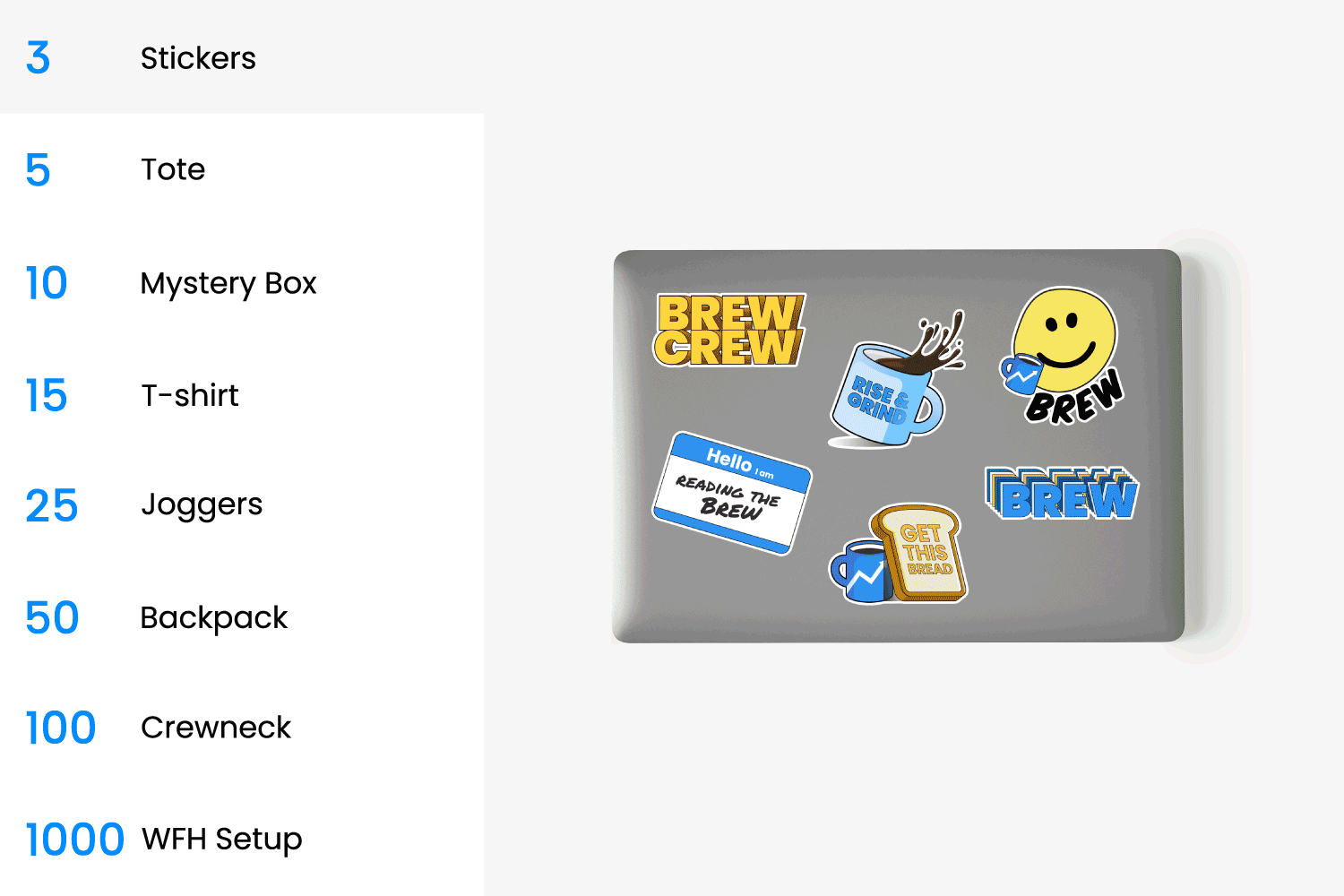Welcome to November. We recommend taking a quick snap poll before deciding when it’s acceptable to blast “All I Want For Christmas is You” in the breakroom (correct answer: today).
In today’s edition:
 Well, well, well Well, well, well
 HR 101 HR 101
 Coworking Coworking
—Kristen Parisi, Amanda Schiavo, Adam DeRose
|
|
Hannah Minh
With high levels of financial stress, record rates of depression, and a loneliness epidemic in the US, new research indicates that not only are many employees feeling down, it could be impacting work performance.
Struggling with well-being. While there’s no single definition of well-being, it can be determined by several factors, including emotional and physical health, social wellness, financial security, and career. This year, one-third of people surveyed feel their well-being is lower than ever, according to sportswear brand Lululemon’s Global Well-Being Report. The survey of more than 14,000 people across North America, parts of Europe, East Asia, and Australasia was conducted by Edelman Data & Intelligence.
And while low well-being appears to be a problem around the world, it impacts some groups more than others. The study revealed that 42% of disabled people report low well-being compared to 29% of non-disabled people, and parents have a 10% higher instance of low well-being (40%) than those without children. Gender is a factor too; around one-half (48%) of men said that society has made it hard to talk openly about their mental health.
Keep reading.—KP
|
|
PRESENTED BY ARBINGER INSTITUTE
|
Transforming company culture won’t happen overnight, and it takes top-down investment. How can leadership help create meaningful change? Ask Arbinger Institute. Their new guide covers everything you need to know about building (or rebuilding) a leadership development program that sets the gold standard for leadership.
In a recent Arbinger Institute survey, 52% of respondents said leadership development has the greatest impact on improving company culture. Why not put that power to good use? The Leadership Gold Standard guide is a 7-step blueprint for leaders to do just that.
In the full guide, you’ll get:
- Arbinger’s 7-step approach to leadership development
- downloadable tools + templates filled with strategies for leaders
- success stories of game-changing company culture shifts—and how leadership teams guided them
Check it out here.
|
|
Francis Scialabba
Welcome to HR 101. Class is now in session. Today’s discussion will focus on family leave in the US.
Offering parents time off to have and care for children seems like a no-brainer, as does providing paid time-off to care for a sick or injured loved one. While these basic benefits are currently offered by some employers across a variety of industries, paid family leave is still not mandated by federal law.
The history. In 1984, the Women’s Legal Defense Fund—now known as the National Partnership for Women and Families—wrote the first draft of what would eventually become the Family and Medical Leave Act (FMLA). Known as the Family Employment Security Act (FESA), it called for up to 26 weeks per year of “unpaid, job-protected leave to care for a new child, a child’s illness, a spouse’s disability, or the employee’s own disability,” according to the Organization of American Historians. Originally, those who proposed the legislation wanted the 26 weeks of leave to be paid, but it was believed that provision would kill the bill. In the end, FESA never made it to Congress, but it did start a national conversation.
In 1993, Congress passed the FMLA and President Bill Clinton signed it into law. The FMLA provided some employees up to 12 weeks of unpaid leave for any of the following reasons: childbirth, placing a child up for adoption or in foster care, or caring for an employee’s own or an immediate family member’s serious sickness or injury, according to research from the Organization of American Historians.
Keep reading.—AS
|
|
Handout
Here’s this week’s edition of our Coworking series. Each week, we chat 1:1 with an HR Brew reader. Want to be featured in an upcoming edition? Click here to introduce yourself.
Jelena Djordjevic has strong business and operations acumen. She joined Thumbtack, a tech company that connects home improvement customers with local service providers, as its chief of staff in 2018. Djordjevic “incubated” many nascent operation processes and administrative functions before moving into the role of VP of people in 2021.
Like many HR pros, the pandemic upended Thumbtack’s approach to office work and forced Djordjevic to reexamine the link between office culture and company culture.
“Our culture is sacred and investing in our culture is sacred,” she said. “Covid introduced us to flexibility in a way that we never had before. To us, it was: What is the end goal? It is a successful business and a thriving culture…The method to get there can totally vary.”
For Thumbtack, it’s a virtual-first, but not virtual-only model, where the company maintains “a real commitment to events and gatherings and local communities” without an RTO mandate.
What’s the best change you’ve made at work?
During my time at Thumbtack, one of my proudest achievements has been transitioning the company to our virtual-first, but not virtual-only model—and continuing to learn, improve, and iterate on our model as we go along. We rolled out a huge change two and a half years ago, but it didn’t stop there. Our culture is constantly evolving based on what’s working and what our employees need to be successful. Based on employee feedback, we’ve adapted our events strategy from large-scale formal events to smaller, more informal and meaningful gatherings
What’s the biggest misconception people might have about your job? Keep reading.—AD
|
|
|
Turn it UP  . There’s nothing like the feeling when your favorite song comes on. Turn your listening experience up to 11 with Bose QuietComfort Ultra Earbuds. With premium noise cancellation, immersive audio, and a comfortable design, your music will feel more real than ever. Say less—and start listening. Learn more. . There’s nothing like the feeling when your favorite song comes on. Turn your listening experience up to 11 with Bose QuietComfort Ultra Earbuds. With premium noise cancellation, immersive audio, and a comfortable design, your music will feel more real than ever. Say less—and start listening. Learn more.
|
|
Francis Scialabba
Today’s top HR reads.
Stat: The average father in Japan has taken 23.4 days of paternity leave in 2023, double the 2022 average, at least partly due to a policy change rolled out by the government last year. (Bloomberg)
Quote: “If you would have told me three or five years ago that it was possible to have an executive role at a fast-growing private technology company from Des Moines, Iowa, I would have been very excited.”—Lee Robinson, a “super commuter” who travels from Des Moines to San Francisco a few times a month for his job (Insider)
Read: Americans are taking more paid time off like sick leave and vacation and logging less hours at work than in previous years. (the Wall Street Journal)
Some serious ROI: What’s the potential ROI your biz could see when employing Beamery’s top-notch talent platform? Beamery commissioned Forrester Consulting to find out. See the impressive results from The Total Economic ImpactTM study.*
*A message from our sponsor.
|
|
With the uncertainties of 2023, the hiring landscape may seem like an enigma, but fear not; our panel of experts and exclusive data will provide you with the insights you need to stay ahead of the curve.
Join our very own Amanda Schiavo, Senior Reporter at HR Brew, as she sits down with Lisa Shuster, Chief People Officer at iHire, to explore topics such as the impact of AI, the effect of upskilling, and the growing imperative for HR and PR collaboration. Don't miss this opportunity to gain a competitive edge in the ever-evolving world of recruitment. Register now!
|
|
|









